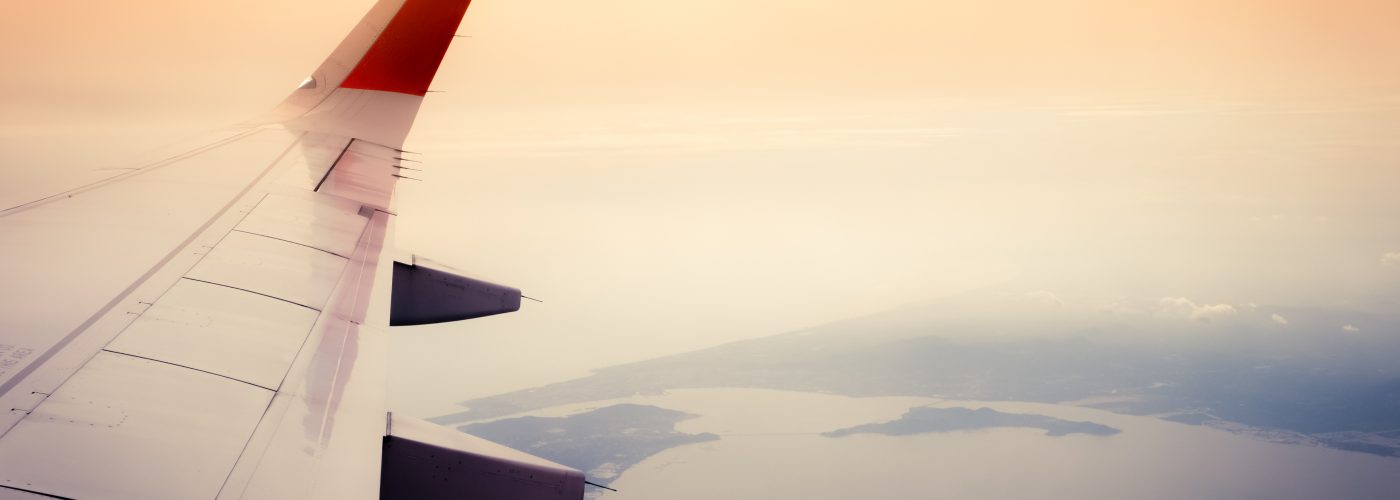Airplane turbulence is an unavoidable part of flying. Sure, pilots can take measures to minimize it, like flying over or around areas of instability. But in the end, the weather’s going to do what it’s going to do, sometimes without warning, and that can mean turbulence.
Some people don’t mind a few bumps, but for nervous flyers turbulence can be a harrowing experience. The good news is that, while it can’t be 100 percent avoided, there are ways to check ahead of time if your flight is more likely to encounter noticeable turbulence.
What Is Turbulence?
Turbulence is, basically, unsettled air. It can be caused by any number of factors including weather, a change in wind patterns or by crossing a jet stream, or disturbances in the air due to mountains or tall structures. In other words, turbulence is exceedingly normal.
“From a pilot’s perspective [turbulence] is ordinarily seen as a convenience issue, not a safety issue,” writes pilot and author Patrick Smith. “When a flight changes altitude in search of smoother conditions, this is by-and-large in the interest of comfort. The pilots aren’t worried about the wings falling off; they’re trying to keep their customers relaxed and everybody’s coffee where it belongs.”
“Passengers might feel the plane ‘plummeting’ or ‘diving,'” he adds, “when in fact it’s hardly moving.” Modern planes are designed to withstand stress well beyond what they encounter in typical turbulent air, and so-called “extreme” turbulence is very rare. Still, the bumps and shakes remind us that we are traveling tens of thousands of feet above the ground in a metal tube—an inherently unnatural proposition to begin with.
“It’s easy to picture the airplane as a helpless dinghy in a stormy sea,” Smith writes, “but for all intents and purposes, a plane cannot be flipped upside-down, thrown into a tailspin, or otherwise flung from the sky by even the mightiest gust or air pocket.”
How to Check for Airplane Turbulence Before You Fly
For the turbulence-averse among us, a little knowledge can go a long way. In addition to reminding yourself that turbulence is normal and not a threat to your safety, there are resources that provide a sense of what you can expect on your flight.
The handy online Turbulence Forecast offers two maps: one showing broad areas of possible turbulence, and another that logs pilot reports of rough (or smooth) air. Both maps serve as a general glimpse at the state of our atmosphere, and can help travelers mentally prep for their flight.
The Aviation Weather Center of the National Oceanic and Atmospheric Administration (NOAA) also shares maps indicating possible turbulent areas, including some of the same pilot report information shown on Turbulence Forecast. These maps are a bit more technical, and less ideal for the average person to use.
While this information is useful, it’s important to remember that predicting turbulence is not an exact science. “Weather is always changing, and predicting the where, when, and how much of turbulence can sometimes be a guessing game,” Smith writes. “Every now and then it’s totally unforeseen. Often, though, it’s as simple as looking out the window.” Pilots understand that certain cloud structures, mountain ranges, and other features or weather patterns are reliable causes of turbulence.
Ultimately, turbulence is going to strike. Pilots will do what they can to smooth out the flight, but short of sitting over the wings (the most stable part of the plane, relatively) there is little travelers can do to mitigate the shakes. But a little preparation beforehand might just help smooth out your nerves.
Readers, do you hate turbulence? Or do you just roll with it? Comment below.
More from SmarterTravel.com:
- The Worst Seats on a Plane (and How to Avoid Them)
- 9 Ways to Sleep Better on Overnight Flights
- 9 Must-Dos Before a Long Flight
We hand-pick everything we recommend and select items through testing and reviews. Some products are sent to us free of charge with no incentive to offer a favorable review. We offer our unbiased opinions and do not accept compensation to review products. All items are in stock and prices are accurate at the time of publication. If you buy something through our links, we may earn a commission.
Related
Top Fares From
Today's Top Travel Deals
Brought to you by ShermansTravel
France: 8-Night Paris, Avignon & Nice...
Infinity Worldwide Vacations
 vacation
$2880+
vacation
$2880+
Poconos: 3 Nts in Garden of...
ResortsAndLodges.com
 hotel
$305+
hotel
$305+
7-Nt Canada & New England Cruise,...
Princess Cruises
 cruise
$839+
cruise
$839+




